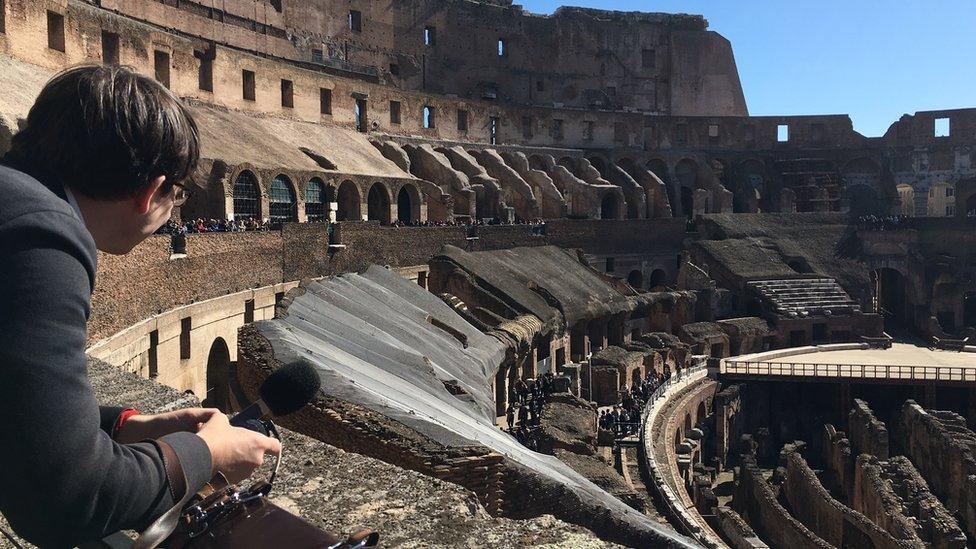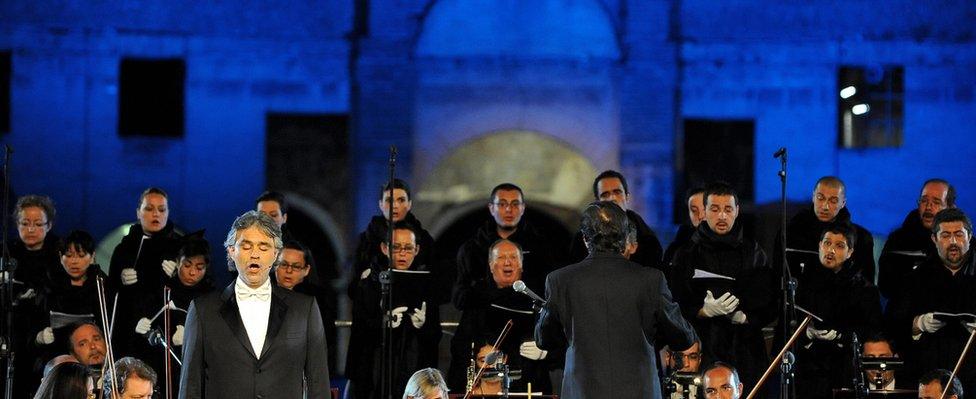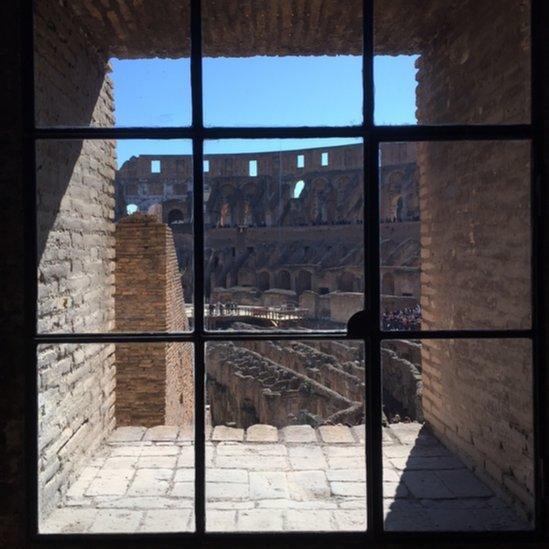Situation vacant: Running Rome's Colosseum
- Published

Office space: Our correspondent assesses conditions at the Colosseum
"Position Description: Director of Italian Archaeological Site: Colosseum (Rome)"
It is a pretty tempting job. The successful applicant will be in charge of preserving the site of one of the world's most iconic monuments.
That person may as well be me.
The job advert asks for at least five years' experience managing archaeological sites.
Well, I have five years experience visiting sites. If outsiders with little experience can be elected to lead countries, why can't they also be chosen to run ancient monuments?
The first thing to do is come up with a pitch.
One potential idea is to rebuild the entire Colosseum.
The pyramids in Egypt have not fallen down. So why should Rome have to live with half a Colosseum?
My first campaign stop is with tourists visiting the site.
"Don't touch anything," warn Jocelyn and Tamaya, students from North Carolina.
"Don't you want to see what it would have looked like?" I ask.
"There are digital models online which show what it would have been like. So just keep this," they instruct.
"Do you not think it's iconic to leave it as it is?" asks Stan from Manchester. "It's like when we went to Egypt, they were redoing the Sphinx. In some ways it spoils the effect of what it should be."
So rebuilding turns out to be a bad idea. I change my job pitch from rebuilding to listening.
What needs fixing at the Colosseum?
"The process of entering through security can be slow and occasionally discourteous," says tour guide Agnes Crawford. "The turnstiles very often don't work properly. The people who are manning the turnstiles have the patience of Job because it's a thankless task with a lot of slightly cross people."
Opera singer Andrea Bocelli cheered everyone up when he sang at the Colosseum. The turnstiles were probably working that day.

Andrea Bocelli performed at the Colosseum in 2009 in aid of the earthquake-ravaged city of L'Aquila
Another idea has caused something of a controversy: renting the site to private firms.
"When one considers that the Colosseum saw 450 years of people being killed, I think the occasional corporate dinner seems fairly small beer in comparison," says Agnes Crawford.
Italian Culture Minister Dario Franceschini will have the final say over the Colosseum's new director.
Nerve-wrackingly, my final appointment is with him.
"We're looking for people with a strong background - archaeologists, art historians, architects, who also have experience managing a cultural site or a museum," he tells me.

"Naturally, if you want to manage the Colosseum and the Imperial Forum, which receive six million visitors a year, you need the scientific knowledge but also the management experience.
"I think in the art world nationalities don't really count. The director of the National Gallery is an Italian, who arrived there from El Prado in Madrid. The director of the British Museum is German. So it's normal that what counts are the CVs, not the nationalities."
I seize my chance.
"Minister, you've opened this up to outsiders, a lot of people will put in applications coming in with new ideas, I will put an application as well. Are you open to hearing from outsiders?"
There is a slight pause before he answers.
"Well, we have job requirements to be admitted for the selection. When we recently chose the directors of the 20 top museums in Italy we received 400 applications. The selection did more than 100 job interviews. It will be similar this time. So you can definitely apply, but to win you need to fulfil the requirements."
It was an elegant way of saying "don't give up the day job".